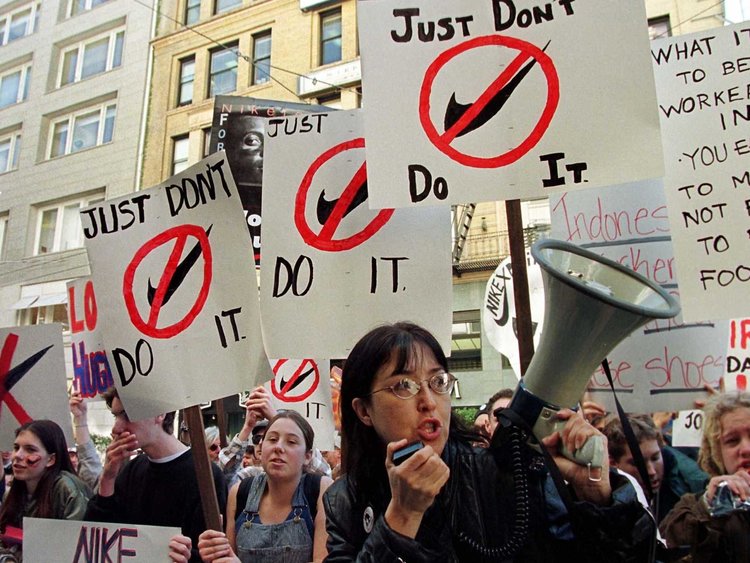An honest question: why was Zoolander III: Kendall Jenner and Pepsi Notice Some Serious Issues laughed into shameful corners of the internet immediately while Colin Kaepernick’s recent advertisement with Nike, that great patron of sweatshops, has been greeted by many with breathless praise? That the public Colin Kaepernick has more integrity than the public Kendall Jenner is the obvious answer, but is it not still just as ridiculous and cynical for Nike to social justice-wash itself as it was for Pepsi to do the same? Can we keep the tagline “sacrifice everything” and the marketing of over-priced shoes by a global corporation separate in our minds? Is it really that easy?
Thomas Frank offers one of the best analyses of the unbreakable union between youth revolt and corporate advertising in his brilliant The Conquest of Cool. Here is his conclusion, written in 1997:
The sixties are more than merely the homeland of hip, they are a commercial template for our times, a historical prototype for the construction of cultural machines that transform alienation and despair into consent. Co-optation is something much more complex than the struggle back and forth between capital and youth revolution; it’s also something larger than a mere question of demographics and exploitation. Every few years, it seems, the cycles of the sixties repeat themselves on a smaller scale, with new rebel youth cultures bubbling their way to a happy replenishment of the various culture industries’ depleted arsenal of cool. New generations obsolete the old, new celebrities render old ones ridiculous, and on and on in an ever-ascending spiral of hip upon hip. As adman Merle Steir wrote back in 1967, ‘Youth has won. Youth must always win. The new naturally replaces the old.’ And we will have new generations of youth rebellion as certainly as we will have new generations of mufflers or toothpaste or footwear.
After watching both ads again, however, I’m reminded of another interpreter. Perhaps these advertisements, featuring as they do the seemingly straight-faced union of moral seriousness, global corporations, vague social justice causes, and (in the case of the Nike ad) inspirational sports clichés, are in fact masterpieces meant to be enjoyed under the lens of “Camp” as defined by Susan Sontag. Is there any winking going on, or is this just “pure Camp?” Consider some of Sontag’s notes:
- To start very generally: Camp is a certain mode of aestheticism. It is one way of seeing the world as an aesthetic phenomenon. That way, the way of Camp, is not in terms of beauty, but in terms of the degree of artifice, of stylization. . . .
- Camp taste has an affinity for certain arts rather than others. Clothes, furniture, all the elements of visual décor, for instance, make up a large part of Camp. For Camp art is often decorative art, emphasizing texture, sensuous surface, and style at the expense of content. . . .
- In naïve, or pure, Camp, the essential element is seriousness, a seriousness that fails. Of course, not all seriousness that fails can be redeemed as Camp. Only that which has the proper mixture of the exaggerated, the fantastic, the passionate, and the naïve. . . .
‘One must have a heart of stone to read the death of Little Nell without laughing.’
– [Oscar Wilde] In conversation. . . .
But the Camp sensibility is not going to restore neighborhoods, work Nike’s global supply chain into a just system of exchange, build trust between law enforcement and people of color, help our fractured communities see each other more compassionately, or challenge any other of our seemingly intractable problems. Forgive me for thinking that this advertising campaign as such won’t help very much either, and, further, that Nike is more likely to use Kaepernick to accomplish its ends rather than the opposite.
Or maybe not. Localists could find much to applaud in LeBron James’s dedication to Akron even if he’s now a Laker. Perhaps he and Kaepernick will push Nike more than Nike will push them. Just about anyone can spark a Trump meltdown; forcing lasting reform on Nike would be a real feat.
If change happens, however, it’s more likely to happen through the hard day-to-day work of parents and teachers in Akron and elsewhere rather than through global advertising campaigns. We don’t need another opportunity to consume our way to authenticity or to further commodify and politicize our personal “brands.” Joe Pug says it well:
And I’ve come to meet the legendary takers.
I’ve only come to ask them for a lot.
Oh they say I come with less than I should rightfully possess.
I say the more I buy the more I’m bought.
And the more I’m bought the less I cost.












“the unbreakable union between youth revolt and corporate advertising”
Freedom’s just another word for lots of things to buy. — James Twitchell.
Comments are closed.